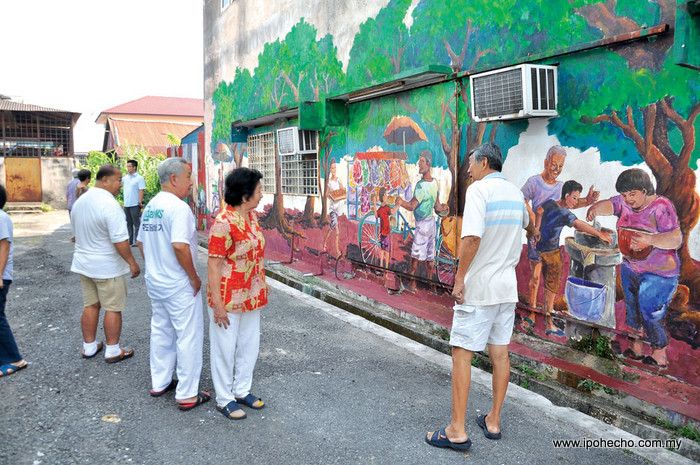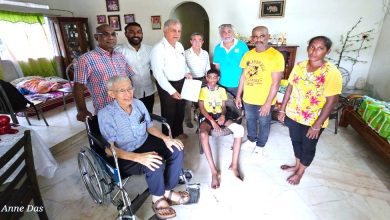Pinji Festival Murals Unveiled




The stunning artworks took six days to complete (March 16-21). Incidentally, Eric Lai is instrumental in drawing some of the many murals around Ipoh. According to Howard, more drawings depicting Pasir Pinji’s lifestyle would be up soon.
One of the highlights of this lengthy piece is the illustration of the rare Pinji rhino, the one-horned rhinoceros which was a favourite among hunters during the British colonial days. This rhino breed was specific to Pasir Pinji, hence its name. However, this fact is not well-known among the locals. It is hoped that through this painting, awareness could be raised and interest be instilled leading to the realisation of the importance of history.
“The idea is to actually use this as a platform for people to come to realisation that if we don’t place importance on recording history, whether oral, social or historical, it would be forgotten,” said Howard to Ipoh Echo.
The artwork is a part of the bigger Pinji Festival, to be held from May 1 to 3. Running on the theme of “self-sustainability”, the upcoming Pinji Fest is packed with activities aimed at rebranding Pasir Pinji and stimulating the local microeconomic ecology.
The historical, social and economic contributions of decades-old businesses to the social fabric that is Pasir Pinji would be highlighted as well. For instance, there are plans to use an abandoned soy sauce factory built in 1953 as an art studio, outdoor cinema and gallery.
Wageningen University, Netherlands has agreed to send its associate professors and Master’s degree students to Pasir Pinji to conduct an oral history project. “It’ll be dubbed a ‘Culinary Heritage Tourism’ with the aim of promoting Pasir Pinji as a culinary tourism destination,” said the energetic lawmaker.
Besides the artistic, cultural, social and historical rationale, there is also an economic rationale behind the organisation of the Pinji Fest. “When you’ve something to draw people’s interest, people will come and when they come, there’ll be trickle-down economic effects. For instance, when you come here at lunchtime, you want to come and makan (eat), as well. Especially, when one of the key themes behind what we are doing here is makan (food),” he enthused.
“This is the idea of the people here. When you go to the pasar (market) you hear their grievances, difficulties and complaints. Behind these complaints is the source why this is happening. It boils down to economics and the lack of geological self-esteem,” Howard concluded.
Mei Kuan


